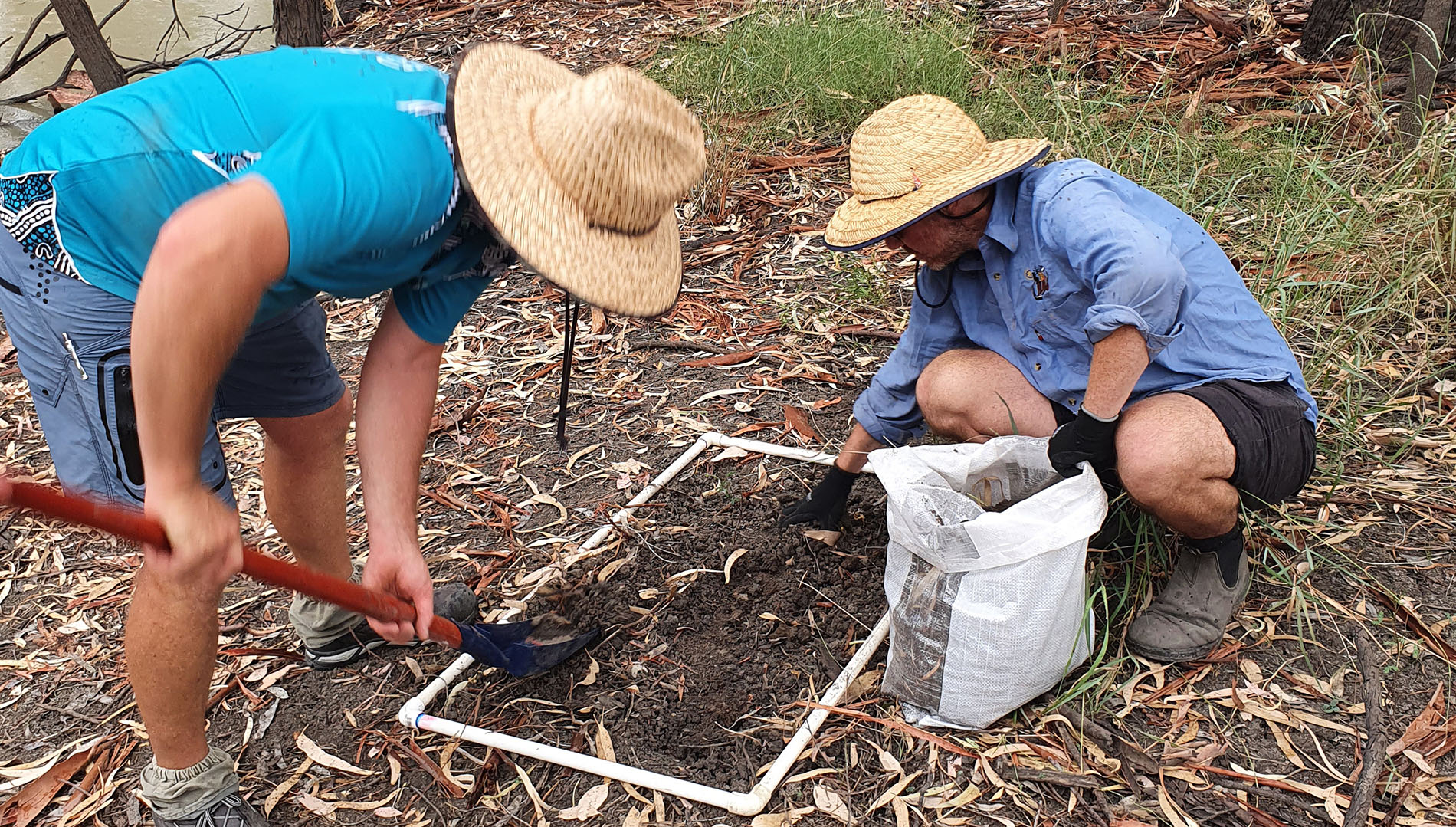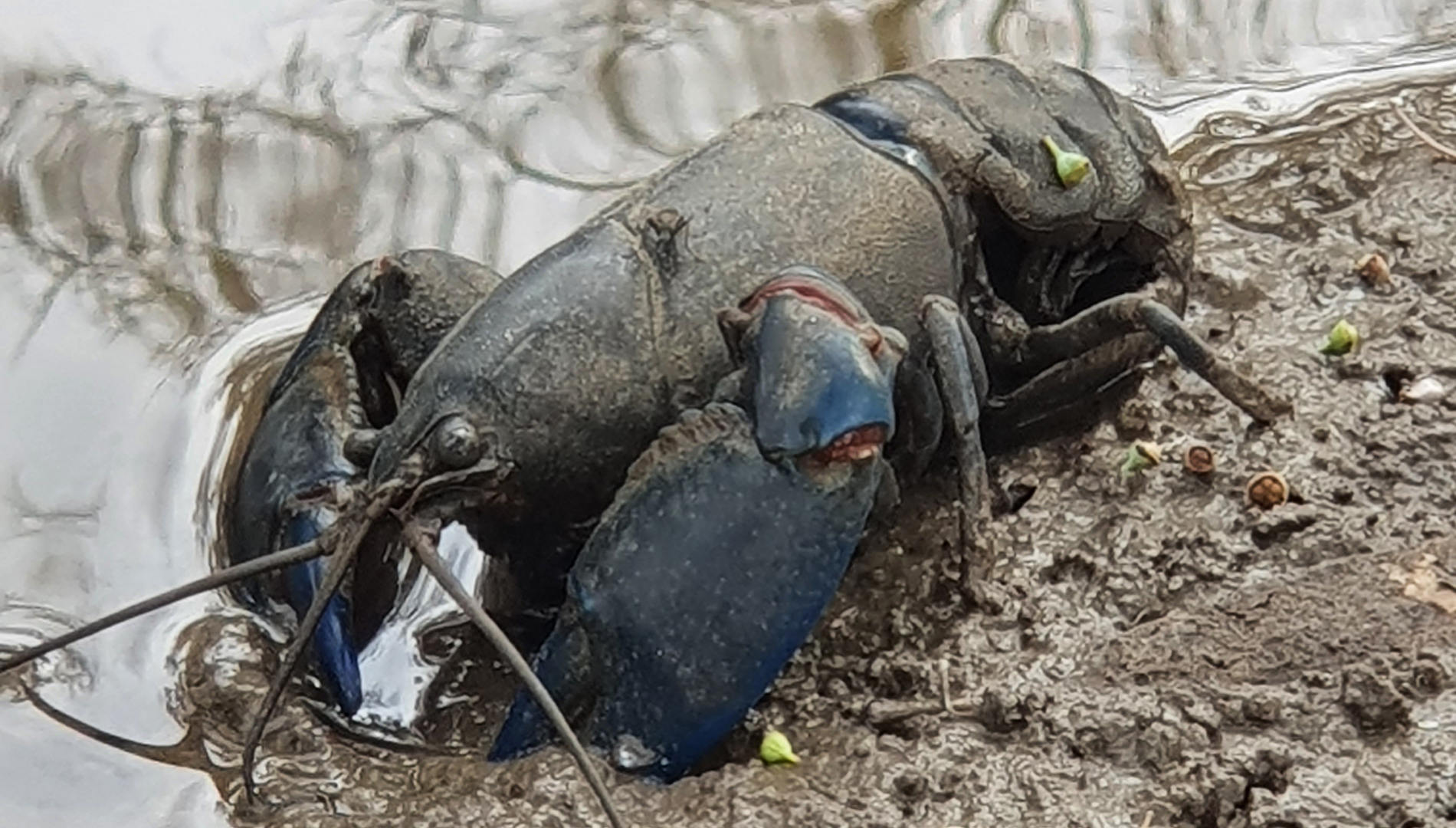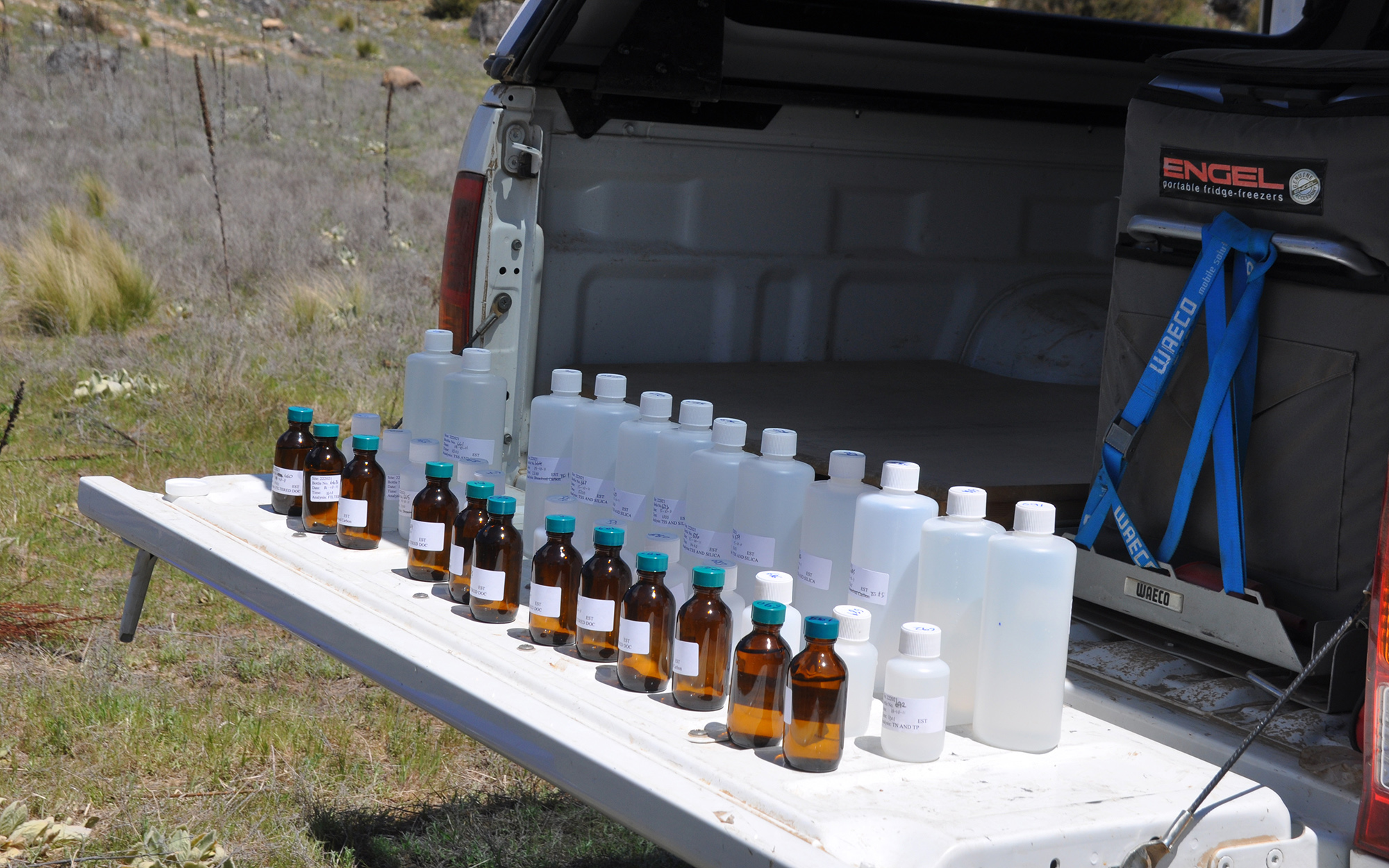Why monitor ecosystem processes?
NSW Water Sharing Plans (WSPs) have environmental objectives to maintain and improve key ecosystem functions and processes. These are the physical, chemical and biological processes that link water dependent organisms with their environment. They influence the suitability of refuge habitats, availability of nutrients and food resources.
River ecosystems are influenced by a range of factors that affect their health. Water quality characteristics such as temperature and dissolved oxygen impact the availability of refuges during drought. Changes to basal resources like nutrients, and productivity are crucial to aquatic wildlife such as fish, frogs and birds as they influence food availability, breeding, recruitment, dispersal and survival.
Protecting and maintaining river flows to support and enhance ecosystem processes is crucial for maintaining healthy and productive aquatic habitats. Our work aims to gain an improved understanding of how river flows influence ecosystem processes, and how the management of water can lead to improved environmental outcomes.
We monitor water temperature, dissolved oxygen, nutrients, organics, food web responses (including plankton abundance) as part of the Environmental Outcomes Monitoring and Research Program. This information is then used to get the best outcomes for the environment during low flow and high flow periods.
- Mapping priority river refuge pools and identifying their flow needs
- Research and monitoring river and floodplain productivity (e.g., plankton) response to different flows
- Research and monitoring of basal resources (e.g., nutrients and dissolved organic carbon) under different flow conditions
- Monitoring water temperature and dissolved oxygen to identify stratification and conditions unsuitable for aquatic organisms
Report
The 2021-22 ecosystem processes annual report introduces projects that have commenced or were further developed during the first year of the Environmental Outcomes Monitoring and Research Program.
Download the report (PDF. 3,001KB)Two projects were introduced under the "Effect of flows on connectivity" and the "water quality of refuges subtheme":
- The "Barwon-Darling/Baaka stratification: minimising persistent thermal stratification and algal blooms in weir pools" project found that historical algal data demonstrate the relationship between a blue green algae species and river flows. Further investigation using field verification is planned for next year.
- The "Spatial analysis of the influence of tributary inflows below large storages in the NSW Murray-Darling Basin" project identified that the degree of river regulation varies significantly across the NSW portion of the Murray Darling Basin. For the majority of tributary junctions across NSW, large changes in the degree of regulation occurred downstream of the junction with either single tributary inputs and/or smaller, cumulative effects of multiple tributaries. The reduction in degree of regulation on the main channel flow as it moved downstream, potentially results in improving ecosystem function. This trend was apparent across most catchments.
One project was introduced under the Aquatic food webs and stream productivity subtheme, "The importance of variable river flows to wet in-channel benches. Linking flow and food web productivity in the Barwon-Darling/Baaka River" project. This project used an experimental mesocosm design to demonstrate the importance of high in-channel flows for boosting productivity in streams.
Two projects were introduced under the subtheme: Habitat and flows:
- The "Fragmentation of drought refugia in the Barwon-Darling/Baaka River" project aims to use satellite imagery and aerial photographs to map drought refugia in the Barwon-Darling River. The mapped drought refugia will be compared in across different years to determine whether similar patterns of drying and the same pools acted as refugia in different events.
- The "Potential available fish habitat in the Barwon-Darling/Baaka – analysis of current and future flow management rules" project was introduced and aims to develop a spatial tool to identify the location of large woody debris and river bank benches in the Barwon-Darling River.


